Themed collection Carbon dioxide at metal centres

Utilisation of CO2 as a chemical feedstock: opportunities and challenges
Enzymes make dreams… a reality.

Dalton Trans., 2007, 2975-2992
https://doi.org/10.1039/B700658F
Carbon dioxide and related heterocumulenes at zinc and lithium cations: bioinspired reactions and principles
Experimental and theoretical investigations of bio-analogue metal complexes are considered. Inspired by the mode of reaction of the enzyme carbonic anhydrase, these complexes are designed to serve as catalysts/intermediates in the course of the activation of CO2, COS and further heterocumulenes.
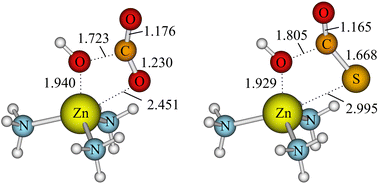
Dalton Trans., 2006, 4191-4206
https://doi.org/10.1039/B608534B
Inspired by nature: light driven organometallic catalysis by heterooligonuclear Ru(II) complexes
Light driven intramolecular energy or electron transfer in heterooligonuclear metal complexes emerges as a powerful tool in organometallic catalysis. Construction principles for different applications such as photocatalytic hydrogen production, carbon dioxide reduction and C–C bond formation are reviewed.
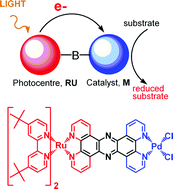
Dalton Trans., 2007, 915-919
https://doi.org/10.1039/B615987G
Asymmetric self-assembly with atmospheric CO2 fixation of a pentanuclear carbonate NiII complex based on dissimilar building blocks
Formation in basic solution of an asymmetric pentanuclear carbonate NiII complex with a compartmental ligand involves atmospheric CO2 uptake, either by reaction of two slightly different dinuclear precursors that yield its di- and trinuclear “building blocks”, or directly, by spontaneous self-organization of metal and ligand starting materials.
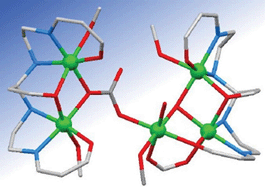
Dalton Trans., 2007, 414-416
https://doi.org/10.1039/B617374H
Insertion of CO2 into a palladium allyl bond and a Pd(II) catalysed carboxylation of allyl stannanes
Pincer palladium allyl complexes undergo very fast insertion of CO2 presumably via a cyclic transition state. The insertion can be incorporated in a catalytic carboxylation of allylstannanes.

Dalton Trans., 2007, 488-492
https://doi.org/10.1039/B614037H
A cadmium hydroxide complex of a N3S-donor ligand containing two hydrogen bond donors: synthesis, characterization, and CO2 reactivity
A new binuclear cadmium hydroxide complex has been prepared, characterized and found to form a binuclear/mononuclear equilibrium mixture in solution; this complex undergoes reaction with CO2 to form a binuclear cadmium carbonate complex.

Dalton Trans., 2007, 351-357
https://doi.org/10.1039/B612748G
Two-dimensional double metal cyanide complexes: highly active catalysts for the homopolymerization of propylene oxide and copolymerization of propylene oxide and carbon dioxide
A new class of double metal cyanide catalysts for the copolymerization of carbon dioxide and propylene oxide is reported.

Dalton Trans., 2006, 5390-5395
https://doi.org/10.1039/B607963F
Insertion reaction of carbon dioxide into Sn–OR bond. Synthesis, structure and DFT calculations of di- and tetranuclear isopropylcarbonato tin(IV) complexes
CO2 uptake by nBu2Sn(OiPr)2 and [nBu2(iPrO)Sn]2O leads to the selective insertion into one Sn–OiPr bond. Structural characterisation reveals the formation of dimers with terminal isopropylcarbonato ligand. DFT calculations support the experiments.
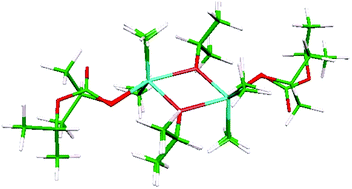
Dalton Trans., 2006, 5167-5175
https://doi.org/10.1039/B610812A
Mechanistic investigation of CO2 hydrogenation by Ru(II) and Ir(III) aqua complexes under acidic conditions: two catalytic systems differing in the nature of the rate determining step
A new strategy for control of hydrogenation of CO2 in the absence of large amounts of base.
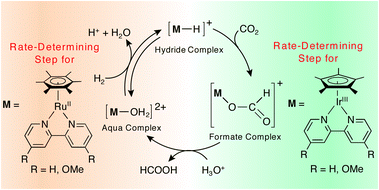
Dalton Trans., 2006, 4657-4663
https://doi.org/10.1039/B607993H
The telomerisation of 1,3-butadiene and carbon dioxide: process development and optimisation in a continuous miniplant
The process development for a miniplant applying telomerisation of 1,3-butadiene and carbon dioxide in a continuous scale is described. Through repeated optimisation combined with parallel laboratory batch experiments the overall space-time-yield of the plant was enhanced significantly.
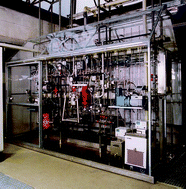
Dalton Trans., 2006, 4607-4613
https://doi.org/10.1039/B608552K
About this collection
Carbon dioxide at metal centres